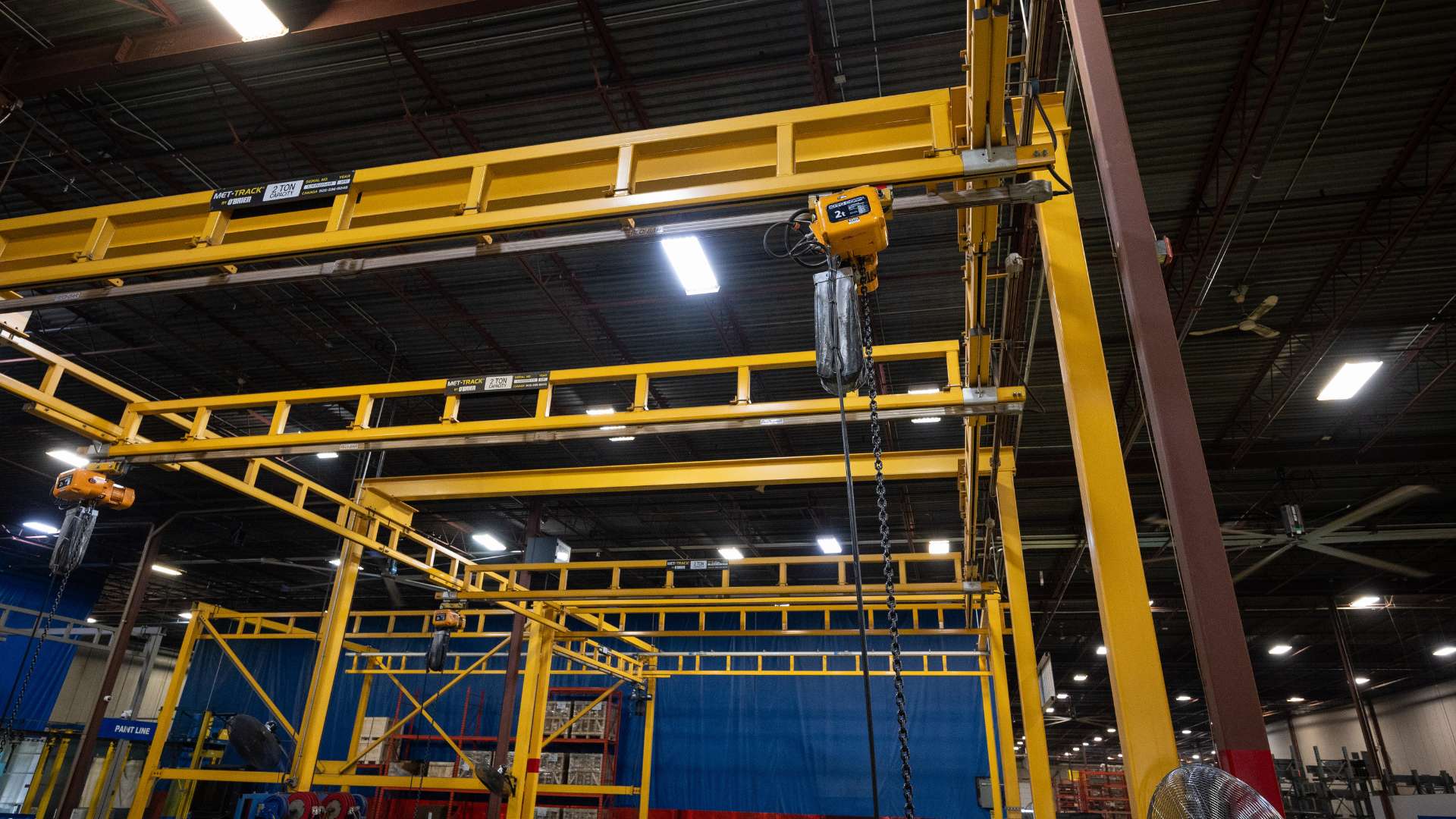
There are many types of cranes, and each has advantages for different uses. When you need a lifting solution, where do you start? First, get a basic knowledge of the types of cranes, collect information on your lifting needs (area, size, and weight of material to be lifted, lift height, and types of material to be lifted), and then call the experts at O’Brien Lifting Solutions.
Types of Cranes: Overhead Crane (Bridge Crane)
An overhead crane (or bridge crane) is designed for lifting and moving heavy loads within a specific area. An overhead crane moves loads along a beam (bridge) supported by one or two rails (girders). Overhead cranes are often used in manufacturing facilities, warehouses, and construction sites to load/unload trucks, and/or lift and move parts down an assembly line with precision.
- PROS – high lift capacity, precise position, movement, and placement of loads.
- CONS – needs a supporting structure, can be complex and expensive to install, and cannot be easily moved.
Want to learn more? See O’Brien’s selection of Overhead Cranes.
Jib Crane
A jib crane is a popular and versatile lifting solution. Generally smaller than overhead cranes, jib cranes are also typically designed to carry lighter loads. Jib cranes get their name from the single beam (or jib) used to lift and support the load. The jib can also be called a “reach” or “boom.” The design of a jib crane allows loads to be rotated up to 360 degrees depending on the configuration.
- PROS – easy installation, typically less expensive to install, versatile.
- CONS – generally lower lift capacity than an overhead crane.
Want to learn more? See O’Brien’s selection of Jib Cranes.
Gantry Crane
When mobility is your top concern, you might need a gantry crane. Gantry cranes and overhead cranes are often used interchangeably, but the key differences are that gantry cranes are supported by one or two legs (while overhead cranes are supported on overhead girders), and gantry cranes are freestanding, able to move on wheels or casters along a track or over your production floor. Gantry cranes can be used indoors and outdoors. For more information on the differences between gantry cranes and overhead cranes read our blog: Do I Need a Bridge Crane or Gantry Crane?
- PROS – portability, versatility, and ability to incorporate a high clearance.
- CONS – Depending on design, may not have as high a lift capacity as an overhead crane (especially if portable).
Want to learn more? See O’Brien’s selection of Gantry Cranes.
Workstation Cranes
The final crane we’ll discuss today is the workstation crane. Workstation cranes are one of the smallest crane options. They’re typically used in smaller, defined areas where workers are required to perform precise repetitive lifting motions. Workstation cranes can be floor-mounted or ceiling-mounted.
- PROS – cost-effective, easy to move if floor mounted, move loads with precision.
- CONS – lower lifting capacity than overhead cranes or gantry cranes.
Want to learn more? See O’Brien’s selection of Workstation Cranes.
Choosing the Right Types of Cranes Can Increase Productivity, Increase Safety, and Save You Money
As you can see, there are many different types of cranes, specialized for many different uses. You want to choose the right crane for your needs. That’s when you need the crane experts at O’Brien Lifting Solutions. We have over 60 years of experience in the industry – we have the know-how you need to select, install, and maintain your lifting equipment. All our cranes are designed to meet or exceed CMAA (Crane Manufacturers Association of America) specifications. Ready to get started? Call O’Brien today at 1-866-392-1944, or contact us online.
Follow us on Facebook.
